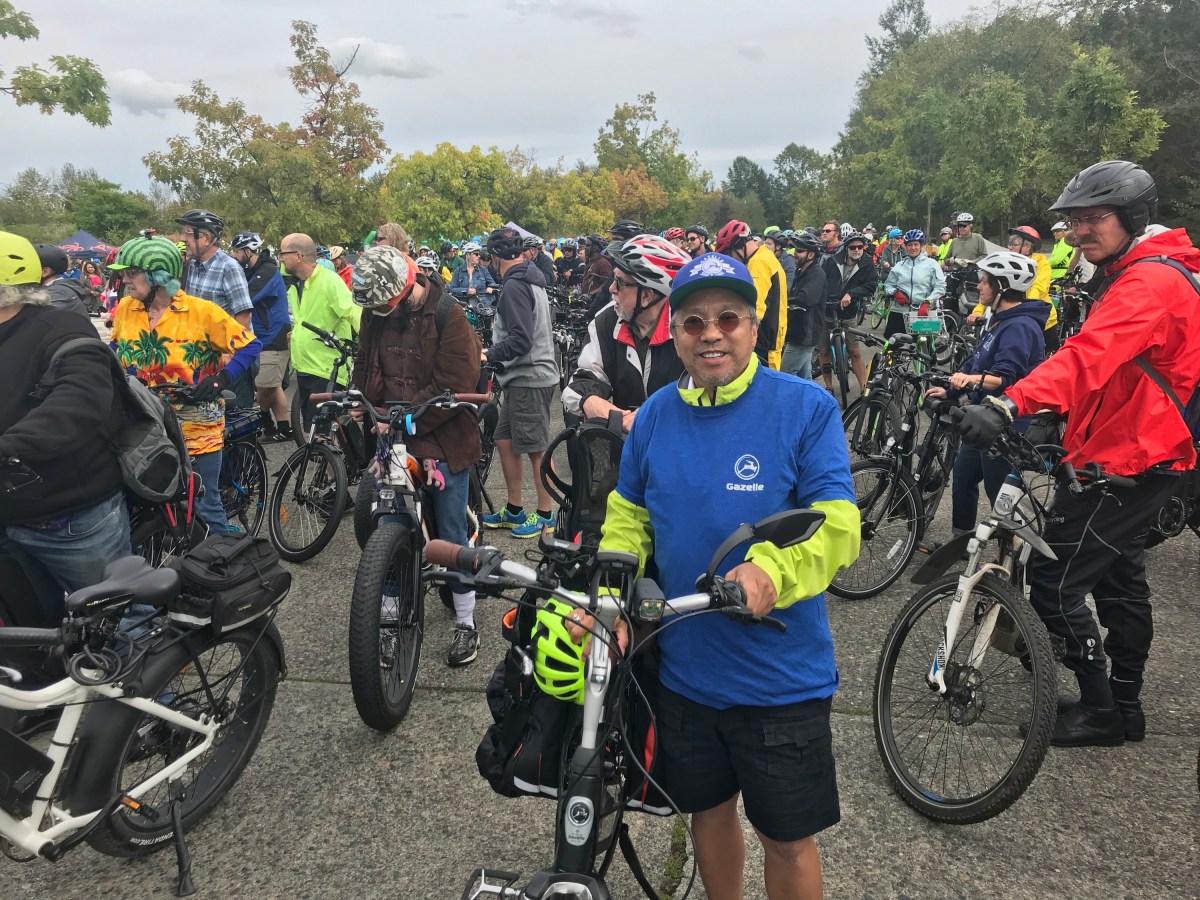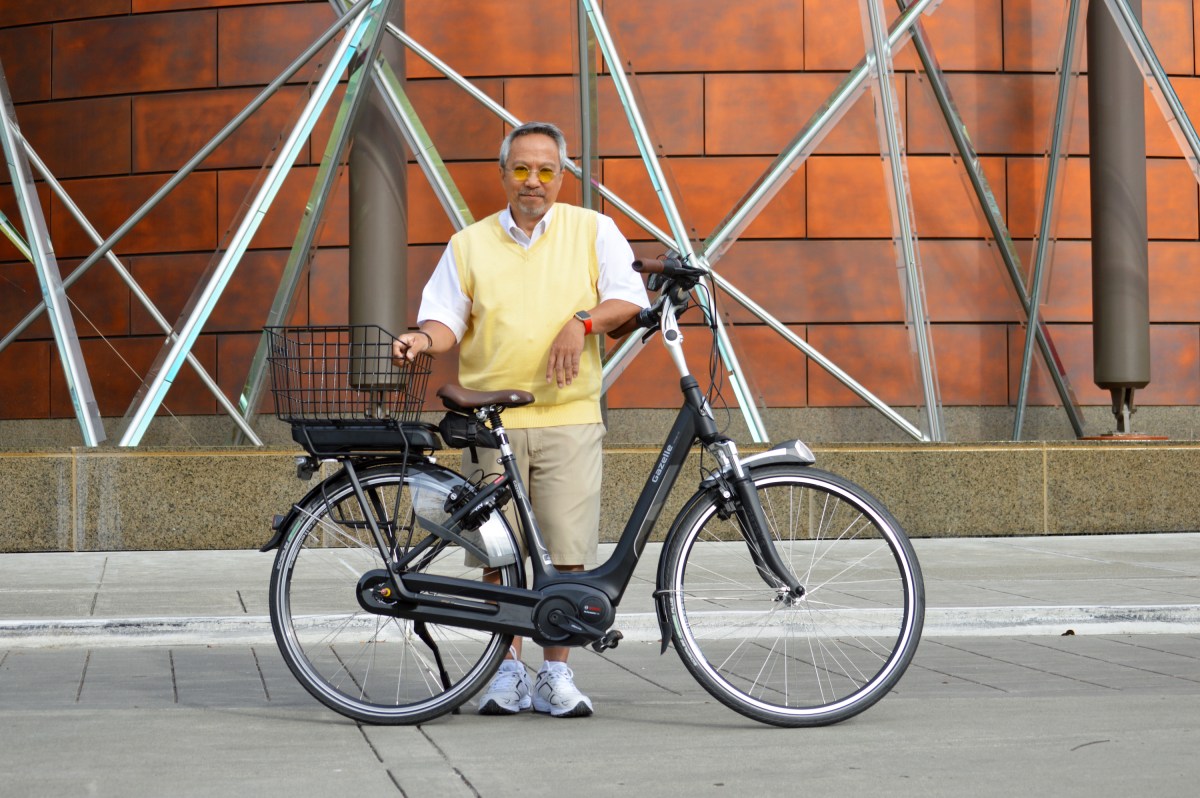Gary Fujioka, Sr. knew something was wrong, but he couldn’t figure out what it was. A few minutes earlier, he had been on a call with a client in his home office in Redmond, Washington. Now, he was lying on the hardwood floor. He reached for his phone, but could only stare at it. Who did he need to call? Why did he have a phone? How did it even work?
Fighting panic and confusion for nearly 40 minutes, he finally got his 911 call out, but suddenly couldn’t remember his own address. As fear pushed the walls in on him, emergency dispatchers pieced together an address, arriving at his house in under four minutes, and not a moment too soon.
Fujioka said he suffered a massive ischemic stroke, a blockage of blood to the brain that accounts for 87 percent of the 795,000 people who have strokes each year in the United States, according to the Centers for Disease Control and Prevention. The doctor attending Fujioka at EvergreenHealth Medical Center quickly administered a tissue plasminogen activator (tPA), an intravenous protein designed to dissolve the clots that cause strokes within a short three-hour window after initial symptom onset. Though he struggled to remember or communicate deep into the night, Fujioka had beat the clock.
He says he awoke “feeling fine” the next day, but learned that his near-death experience was just the beginning of a much longer struggle. A 2001 Danish report published by the World Health Organization says that stroke survivors are almost five times more likely to die between four weeks and one year after their first stroke. After that period, they are two times more likely to die than the general population.
Sitting in his hospital bed, a 61-year-old stroke survivor consumed by work and a sedentary lifestyle, Fujioka knew he needed to make a serious change. Actually, now his life depended on it.
“When you have a major medical event in your life, you realize that you need to stop and smell the roses,” Fujioka said. “I knew I needed to exercise and stay active.”

“Being on a bike is to regain the sense of freedom,” Gary Fujioka, Sr., said about riding an e-bike after he had a stroke. (Photo Credit: Courtesy of Gary Fujioka, Sr.)
Exercise and movement in general are near universally accepted steps in the path toward stroke recovery. Unfortunately for Fujioka, that posed a tall order. He knew exercise was important, and he had been an avid cyclist up through college, but that love, and any semblance of a regular exercise routine, had taken a backseat to work, family and adult life.
Still, he knew that getting back in the saddle could be essential to adding years to his life, so he tried to get back on his bike. But his folding bike felt slow, no matter how he pushed it over the couple of miles near his Redmond home. Within days, he was beaten back by burning hamstrings and soreness.
“The joy of biking was gone for me,” he admitted, adding that it felt more like a chore than something he could ever hope to stick with. That’s when he turned to an e-bike.
Fujioka had followed the ebiking movement before his stroke, thinking that it could be a way to get back into the sport. Now, he found a 500-watt e-bike perfect for putting in miles along the Sammamish River Trail close to his home, and decided to give it a try. The difference was immediate.
“My electric bike increases my range and endurance,” Fujioka explained. His bike can hit 20 miles per hour with a range of 40 to 100 miles depending on its pedal-assist level. “It flattens hills and allows me to ride for hours without any of the burning in my legs that made riding unpleasant,” he added.

(Photo Credit: Courtesy of Gary Fujioka, Sr.)
After years of inactivity and just months after suffering a massive stroke, the Washington native is now biking most days, advancing from riding for therapy to putting in 40-mile, moderately-paced, pedal-assisted rides.
Fujioka has even convinced some of his friends to purchase e-bikes, and the tight-knit group has started going on longer rides together. He also joined the Seattle-based Cascade Bicycle Club, participating in group rides and volunteering his time to the organization.
Through ebiking, Fujioka has staved off any negative stroke side-effects and has thus far prevented any additional health scares.
Although research into the health benefits of ebiking is in its infancy, the early findings mirror Fujioka’s experience. For example, a 2018 study by researchers at the University of Basel in Switzerland concluded that e-bike-riding had health benefits comparable to regular biking, including improved cardiorespiratory fitness. A review in the International Journal of Behavioral Nutrition and Physical Activity has since suggested that pedal biking provides a better workout than ebiking, but that the pedal-assist option offers an improved workout over walking during the same time period.
For Fujioka, his e-bike gives him the option to burn calories or simply spend some extended time outside.
He says the stroke opened his eyes, but hopping on an e-bike has actively helped him put his health first, and see the world around him in a different light.
“Being in a car or at a desk is being separated from the world around us,” he said. “Being on a bike is to regain the sense of freedom and connection I had on my first Schwinn Sting-Ray as a boy. Life is great, and my days are filled with gratitude.”
